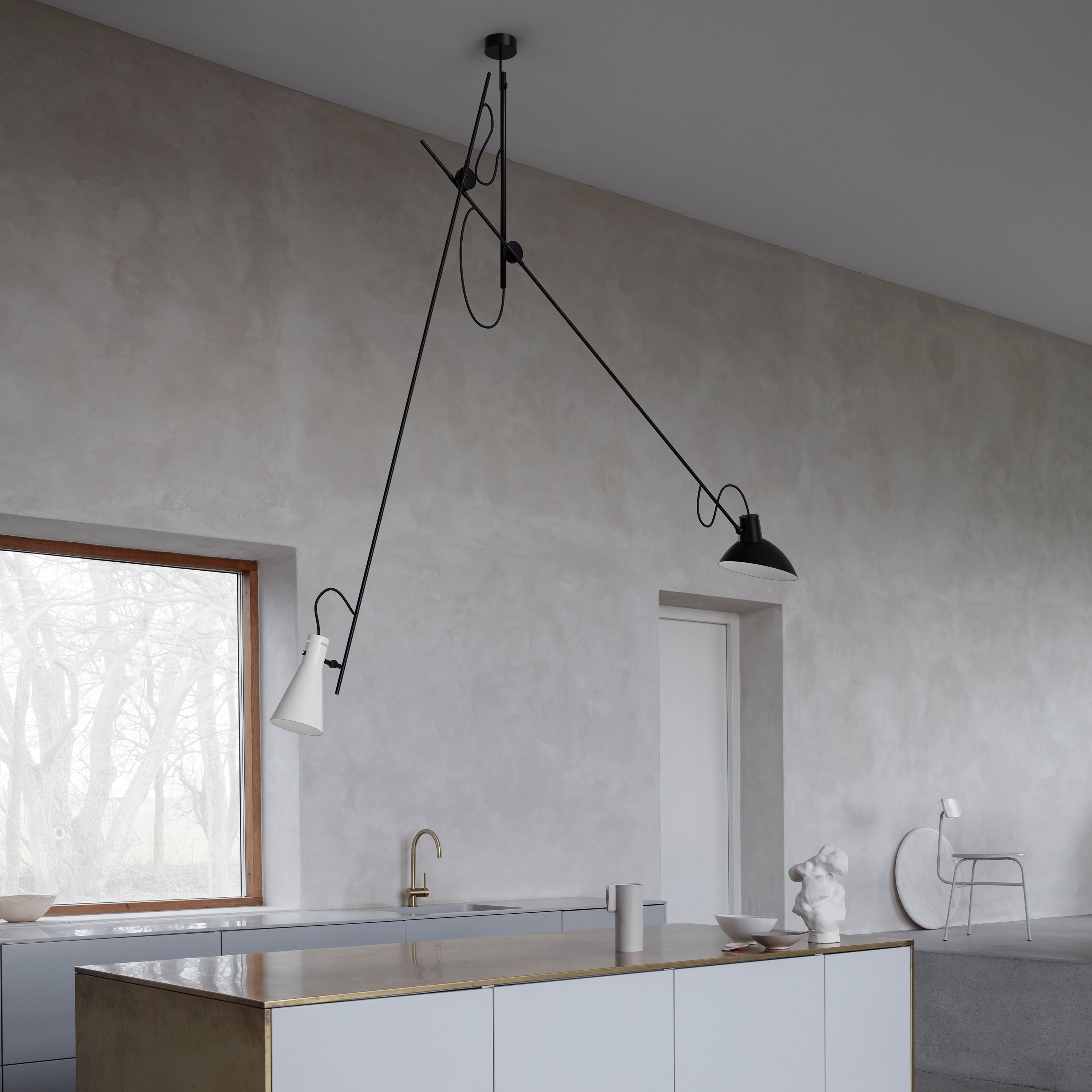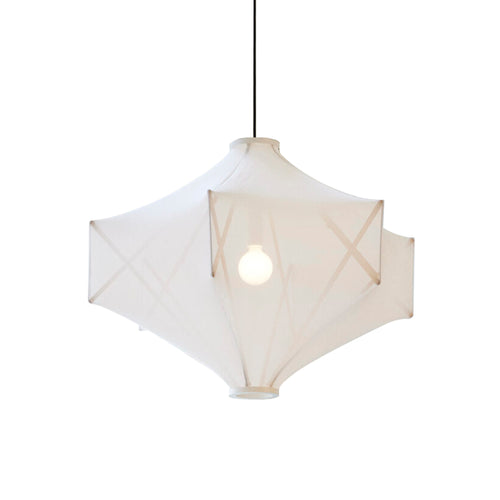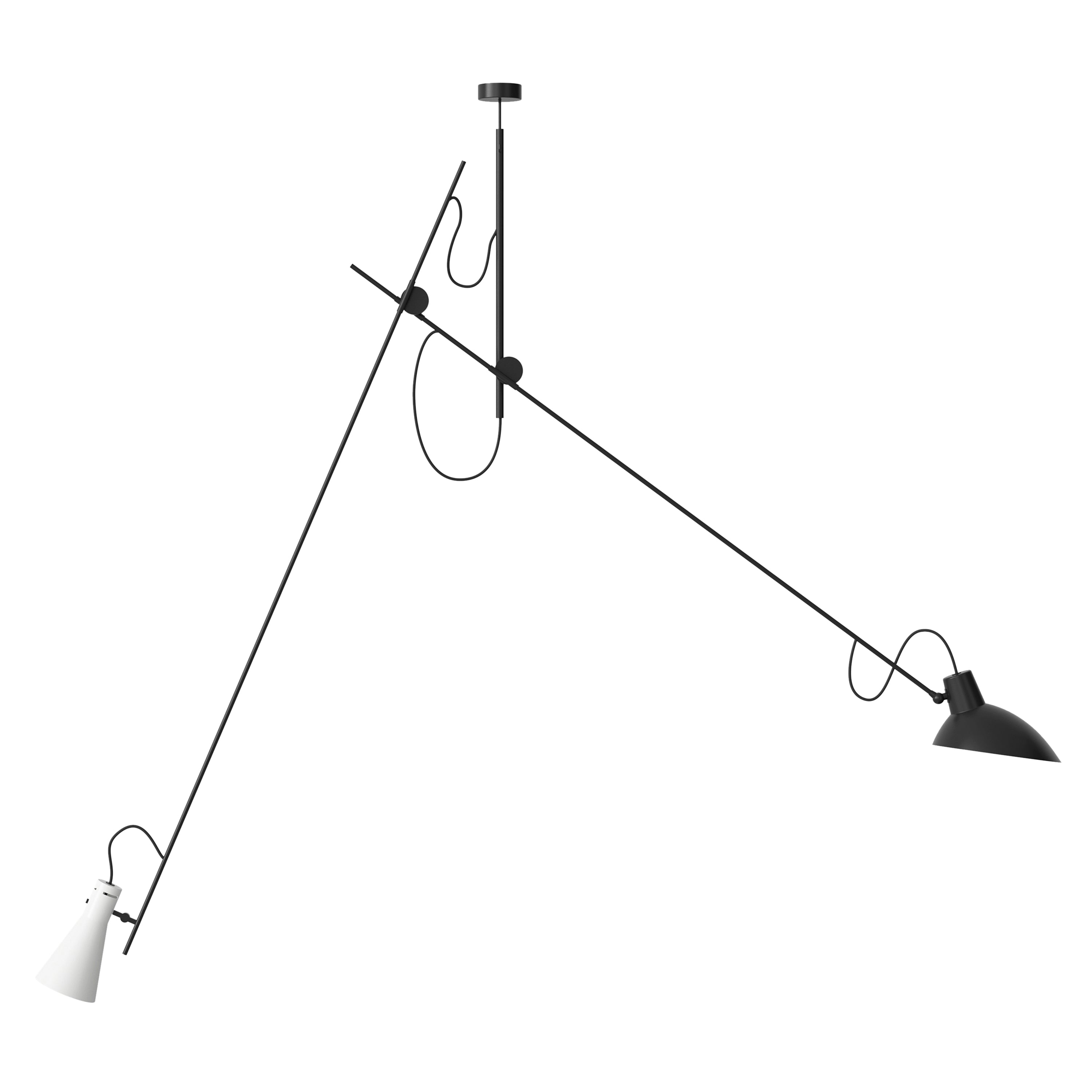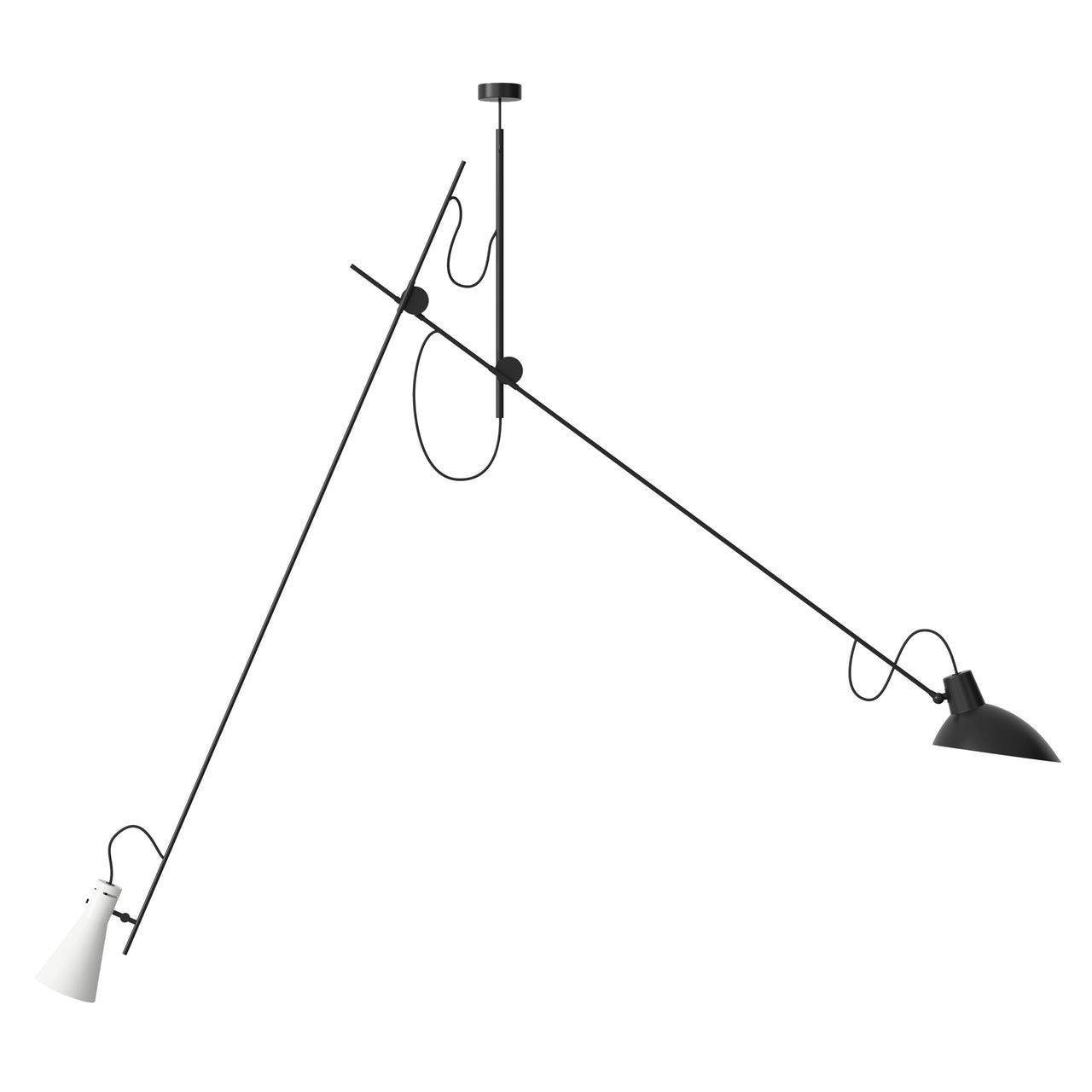
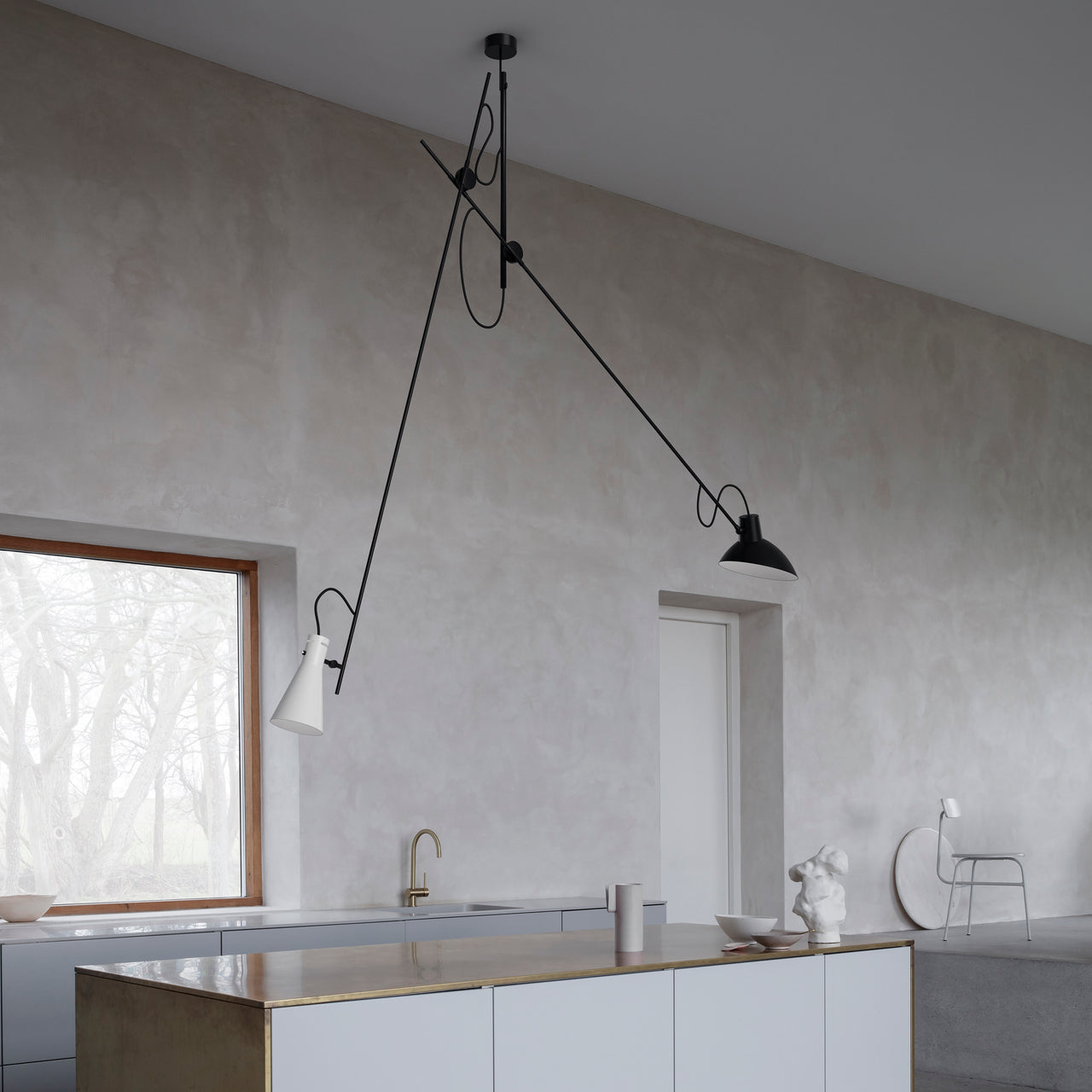
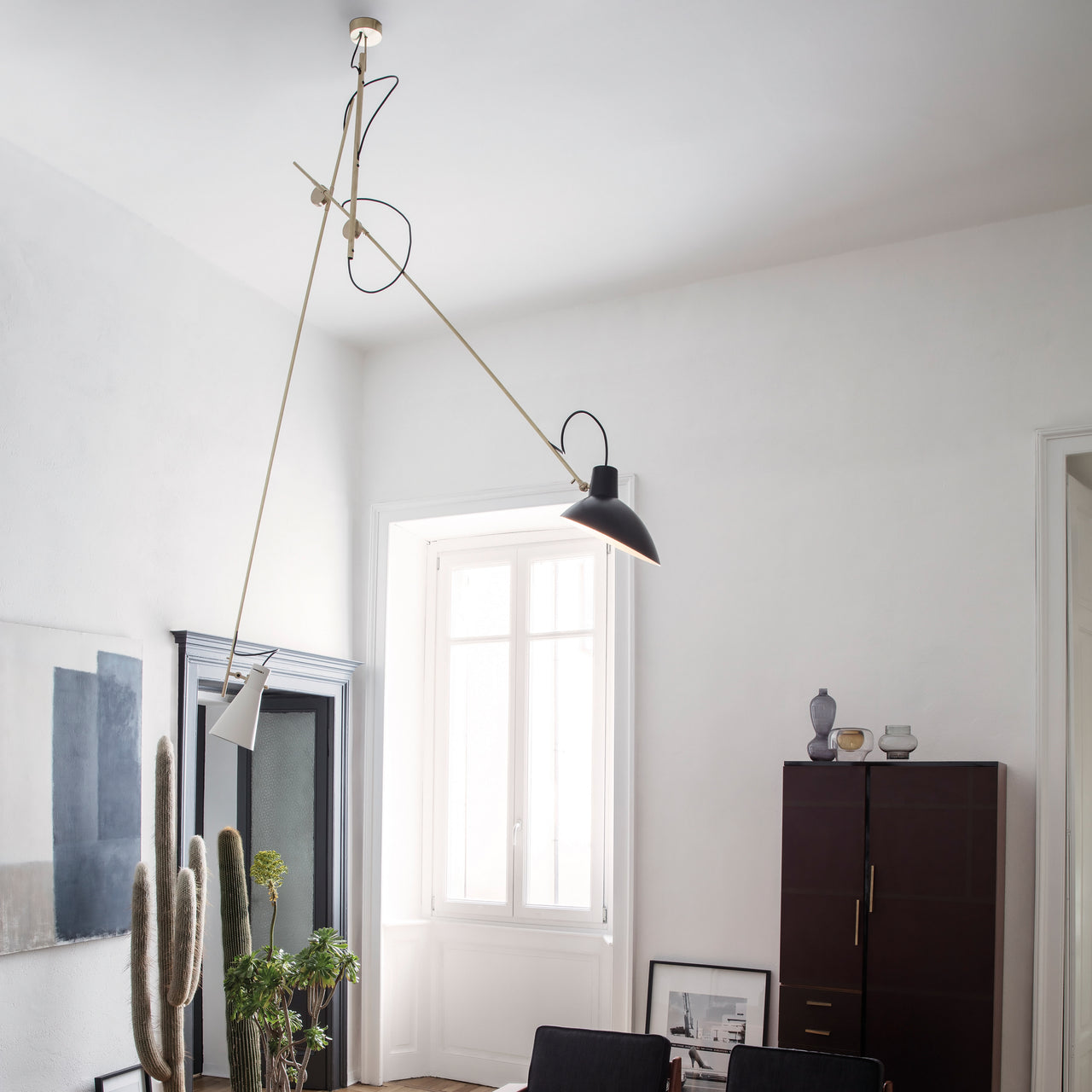
VV Cinquanta Suspension Lamp
$3,900
$3,900
$3,900
$3,900
$3,900
SKU: ASTP-T02-S21-00BB
$3,900
SKU: ASTP-T02-S21-00WB
Description
Notable Italian architect Vittoriano Viganó's 1951 suspension light features a memorable dual-stemmed theme—with a pair of the series' signature reflectors in opposing narrow and wide shapes. Both VV Cinquanta's movable arms and individual reflectors can be adjusted for a wide range of downward and upward lighting effects. With the spun aluminum reflectors in the original Viganò colors, the timeless design is produced in Italy and reissued by Copenhagen-based Astep.
Specifications
Size
- 70.9" h x 9.8" w x 74.8" d (180x25x190cm)
- Shade: 10.8" dia (27.4cm)
Material
Steel or brass, spun aluminum
Technical
- Contact us for UL details
- E27
- Color temperature: 2700K
Details
- Made In Italy
- Contact ([email protected]) for UL certified models
Brand
Astep
Astep founder Alessandro Sarfatti is as close to design royalty as one can get. In 1939, his grandfather Gino Sarfatti founded the legendary Italian firm Arteluce, which introduced a notable sense of style to the lighting field. In turn, in 1978, his father Riccardo Sarfatti and his mother Sandra Severi, along with architect Paolo Rizzatto, followed up with Luceplan, exploring new lighting technology and working with specialized craftsmen. Both companies turned out a number of Italian modernist design classics, but Alessandro decided to form Astep in Denmark, telling Domus magazine, “All my roots are in Italy; my friends and my network are here. So, the company has this Scandinavia-Italy spin.”
Alessandro prizes both innovation and the high points of the past, developing new lighting products while retaining the best of the best. His company debuted with reworked versions of the Model 2065 style from his grandfather and the VV Cinquanta series from designer and family friend Vittoriano Viganò. Given today's digital-leaning world, Alessandro says Astep aspires to extend the forward-thinking outlook of his forbears and embrace the quality of life that new technologies offer. “Admiration for the past is a good thing,” he adds, “but, most of all, we want to offer something new.”



